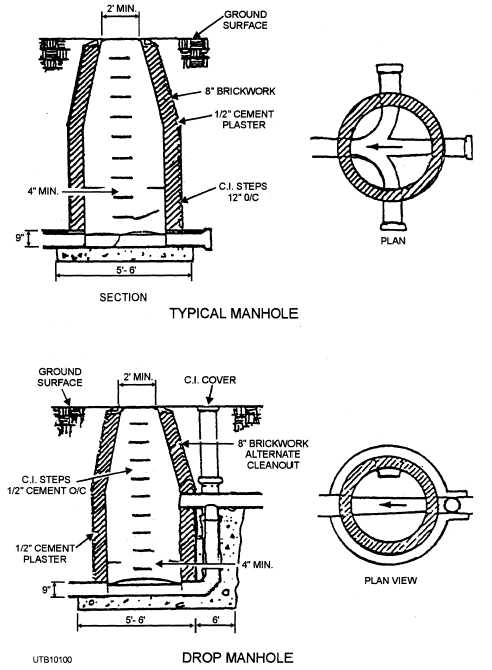
Figure 4-34. - Types of manholes.
and to allow access to the trench. If the trench is dug in unstable ground or is deeper than 5 feet, place shoring in the trench to protect workers from a cave-in.
Preparing the Trench
The pipe must be set on a well-prepared bed. The pipe should be laid with the bell ends on the upstream grade for a good joint. A small notch should be made for each bell, so the pipe will lie flat on the bed. Where rock is encountered, it should be removed to a point at least 3 inches below the grade line of the trench, and the trench should be backfilled with sand tamped in place to provide a uniform bearing for the pipe between joints. Care should be exercised, so the pipe does not rest on rock at any point including the joints. If materials of inadequate bearing are found at the bottom of the trench, stabilization should be achieved by overexcavating to solid bearing and bringing up to pipe grade by the use of sand, crushed stone, or a concrete foundation. Such a foundation should be bedded with sand tamped in place to provide a uniform bearing for the pipe between joints. The trench should be backfilled in layers of 6 inches. Until the crown of the pipe is covered by at least 2 feet of tamped earth, considerable care should be exercised in backfilling
Continue Reading